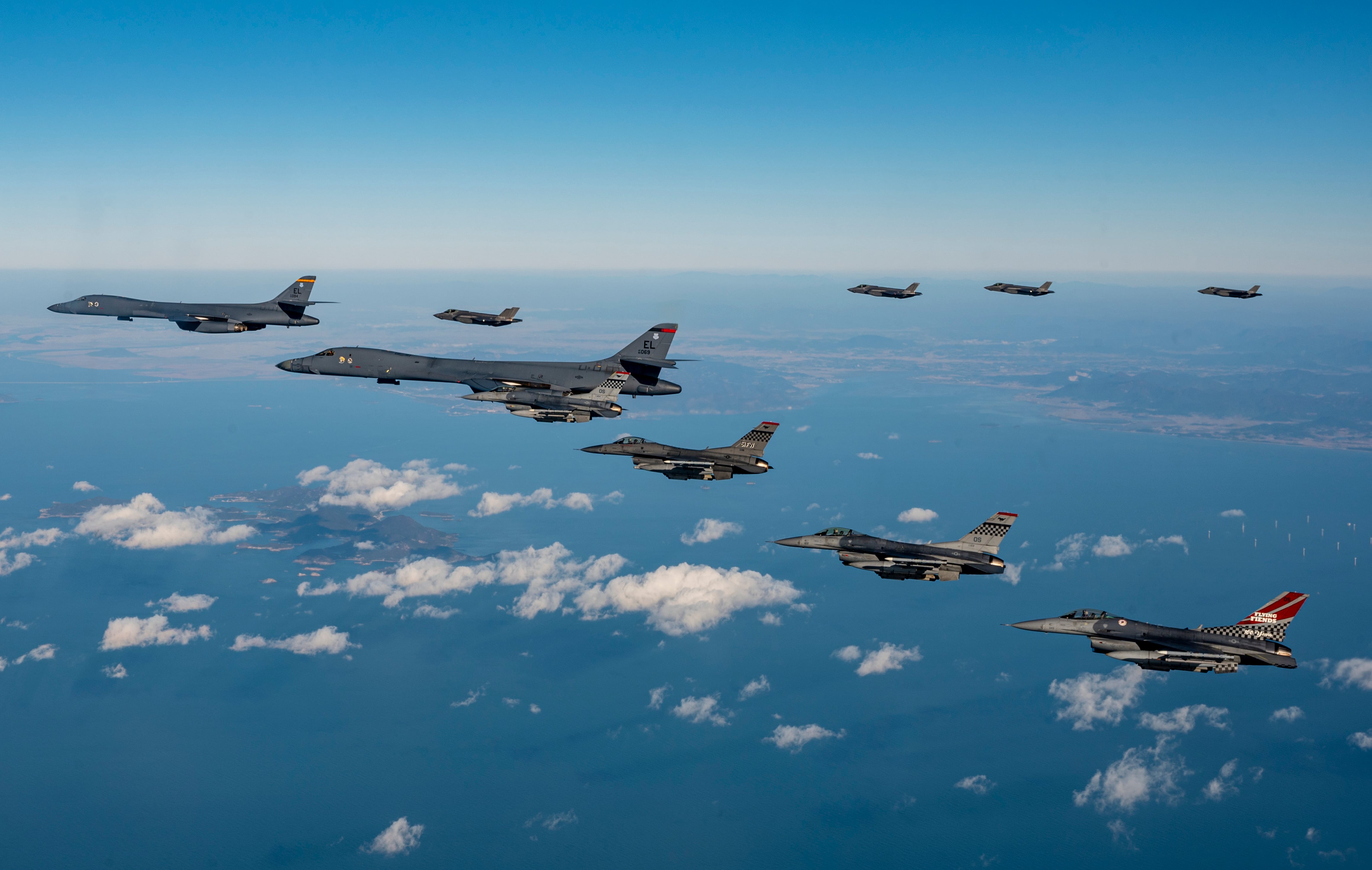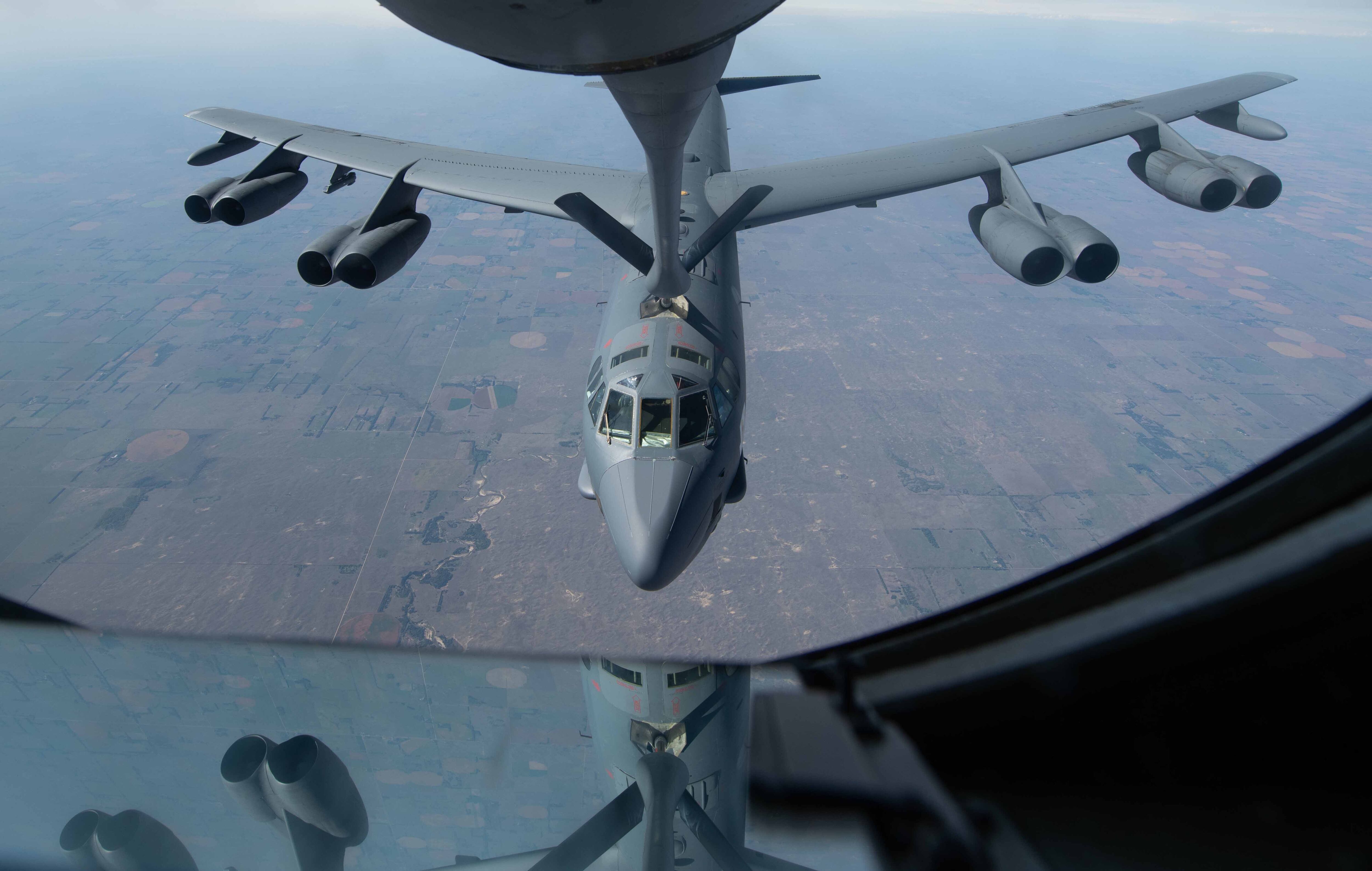WASHINGTON — With December’s public debut of the B-21 Raider, the U.S. Air Force’s preparations to receive its newest stealth bomber — and transform its bomber fleet — will kick off in 2023.
The rollout of the Northrop Grumman-made aircraft, which took place Dec. 2 at Plant 42 in Palmdale, California, marked the first time the Air Force unveiled a new bomber in more than three decades.
In years to come, the Air Force’s bomber fleet — now made up of B-1B Lancers, B-2 Spirits and B-52 Stratofortresses — will look very different. The service wants to have a two-bomber fleet consisting of at least 100 B-21s plus a revamped fleet of B-52s with new F130 engines by Rolls-Royce. The Air Force currently has 76 B-52s.
The B-1 and B-2 fleets are on track for retirement by the early 2030s. The B-1′s retirement already started, with 17 of the fleet’s oldest and most ailing airframes retired last year to free up the labor force and resources, leaving 45 remaining.
The next step for the B-21 is its first flight, expected in early 2023, based on results from the bomber’s ground tests. The initial Raider will fly from Palmdale to Edwards Air Force Base in California, where it will undergo formal flight tests.
But other preparations are underway in the Air Force to ensure the B-21′s new homes are ready when it arrives. Ellsworth Air Force Base in South Dakota will be the bomber’s first main operating base, and Whiteman Air Force Base in Missouri and Dyess Air Force Base in Texas will follow.
In 2022, the Air Force received funding for five new construction projects at Ellsworth supporting the B-21, and construction on a hangar to maintain its stealth coating began earlier this year.
The Air Force has site activation teams working with the wings and local communities at the B-21′s future bases to understand how the accompanying increase in labor force needs and activity will affect the area, and how to handle the contracting process to build up facilities, according to Maj. Gen. Jason Armagost, director of strategic plans, programs and requirements for Air Force Global Strike Command.
The planning efforts are detailed and include talking to local communities about how they’ll need more staff at schools to handle the increase in students that might come with the additional personnel needed for the B-21.
“There’s a lot of infrastructure that goes with that [B-21 arrival], and we’re planning for that,” Armagost told Defense News in an Oct. 24 interview.
For example, the Air Force this year awarded Northrop Grumman a contract to buy long-lead items in advance — material needed to build the first lot of production B-21s that could take a long time to acquire.
Global Strike Command is setting up a plan to develop the leaders — both on the aviation and maintenance sides — who will command the various B-21 organizations when they arrive, as well as planning for other personnel such as senior and supervising front-line noncommissioned officers.
“The first squadron commander of a B-21 squadron can’t just show up, get a checkout in the B-21, and say: ‘Hey, that’s good,’ ” Armagost said. “That person’s going to have a deeper history with the plane. They’re going to have flown it in [a] test. They’re going to have helped develop the tactics, techniques and procedures that make it an operationally relevant platform as soon as it is flying in that capacity.”

A change of fleet
The Air Force is also readying to cut its B-1 and B-2 fleets. The service’s plan is to retire those around 2031 or 2032, but Armagost said some factors could delay that schedule. For example, he explained, events could shift that might require the Air Force to hold onto some of its legacy bomber capabilities. That could include a conflict breaking out with China or unforeseen delays in the B-21 acquisition.
“Pending any large geopolitical shifts, we reserve the right to stick to that event-driven timeline so the nation has the capabilities it needs … from today through transition” to the two-bomber fleet, Armagost said.
Lawmakers also could step in and restrict the Air Force’s ability to retire B-1 or B-2 bombers. Congress’ fiscal 2022 National Defense Authorization Act already pushed the pause button on further B-1 retirements, at least until the end of September 2023, while the B-21 is still on its way.
Armagost said the Air Force has “routine discussions, almost daily discussions” on how to juggle its three — eventually and temporarily four — different bomber fleets, such as balancing maintenance and operational needs. It’s a complex matter, he admitted.
As the Air Force moves to re-engine its B-52 fleet, the service must ensure there aren’t capability gaps while bombers are offline, Armagost said. Delivery of the first modified B-52s is expected by the end of 2028, and the Air Force hopes to keep the Cold War-era bombers flying into the 2050s, about 100 years after they began operating.
The B-52s will get their new engines as part of planned depot maintenance work, Armagost said, and the service has drawn up a schedule for doing so.
Armagost said the Air Force has budgeted additional time in the re-engining process to give it “wiggle room” in case unexpected issues arise. After all, the wide-winged B-52s are 60 years old on average and have spent much of those decades exposed to the elements.
The Air Force has a long track record of dealing with corrosion in the B-52, Armagost noted, and knows what to look for and how to fix it. But the service will also look for new signs of potential corrosion, he added.
“We understand the airframe, we understand the maintainability, we understand the flight profiles,” he said. “We’ve changed how we fly these long-range platforms in ways that give us confidence in the [B-52′s] lifetime. Based on how we’re going, we’re going to fly it [for years] in the future.”
Stephen Losey is the air warfare reporter for Defense News. He previously covered leadership and personnel issues at Air Force Times, and the Pentagon, special operations and air warfare at Military.com. He has traveled to the Middle East to cover U.S. Air Force operations.





